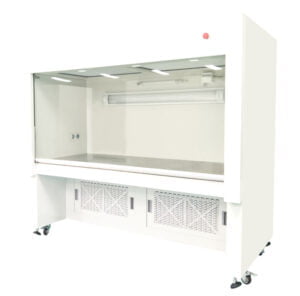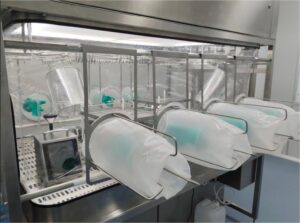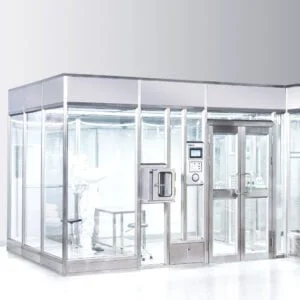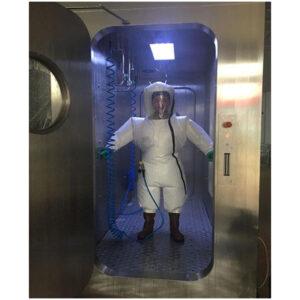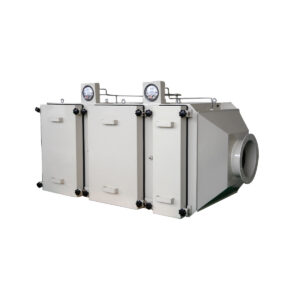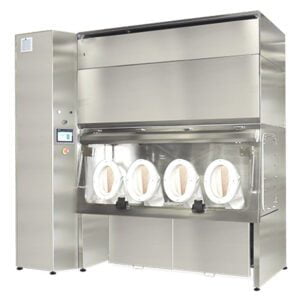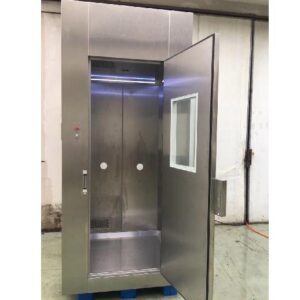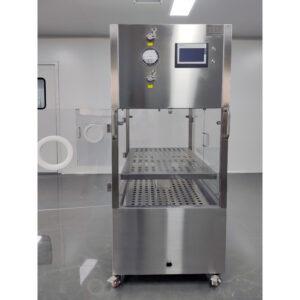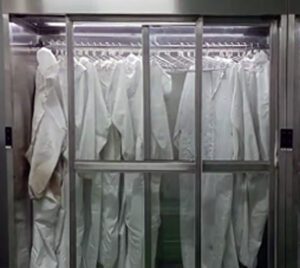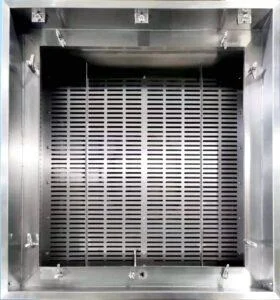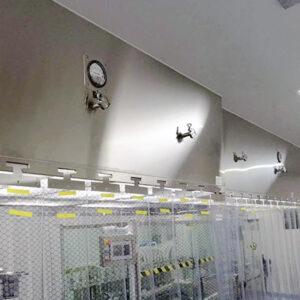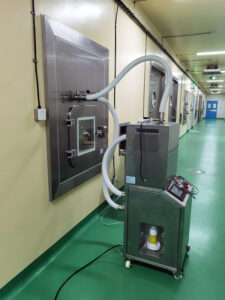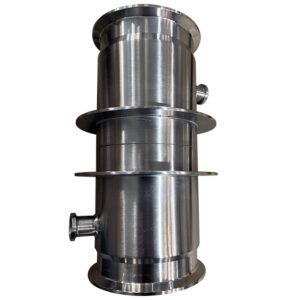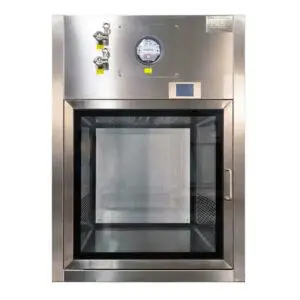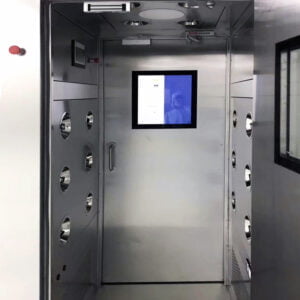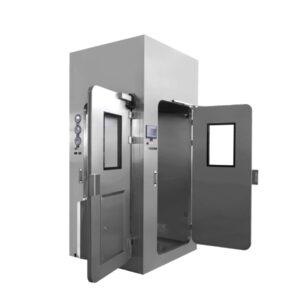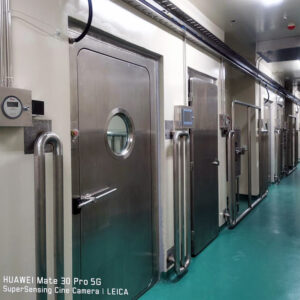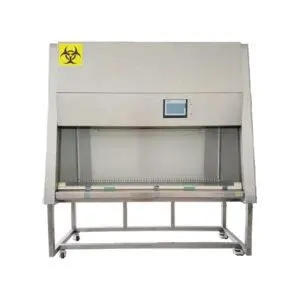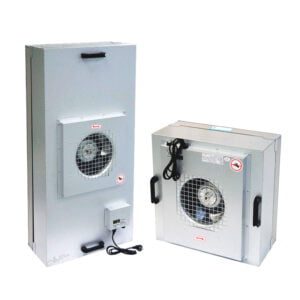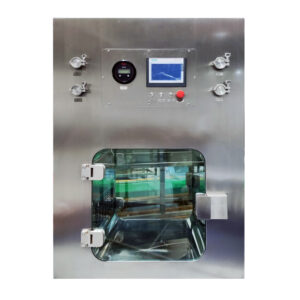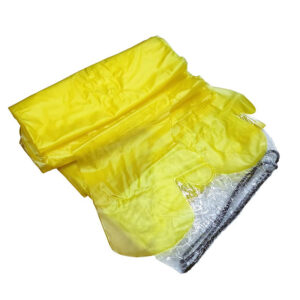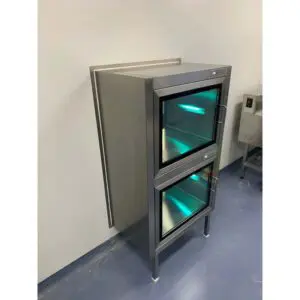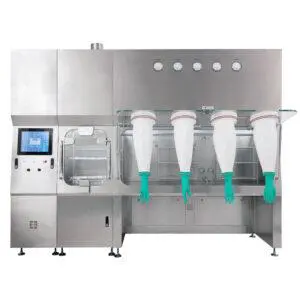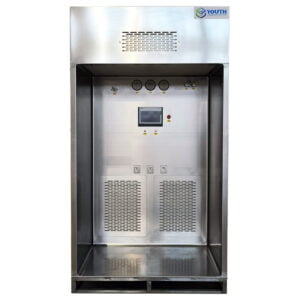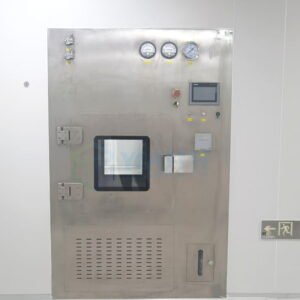In the ever-evolving landscape of pharmaceutical compounding, adherence to USP <797> standards is paramount for ensuring patient safety and maintaining the integrity of sterile preparations. As the industry continues to advance, sterility test isolators have emerged as essential tools for achieving and maintaining compliance with these rigorous guidelines. These specialized units provide a controlled environment crucial for conducting sterility tests, a critical component of quality assurance in sterile compounding.
The importance of USP <797> compliant sterility test isolators cannot be overstated. These sophisticated systems offer a multifaceted approach to maintaining sterility, incorporating advanced filtration technologies, precise environmental controls, and ergonomic designs that facilitate proper technique while minimizing the risk of contamination. By integrating these isolators into their workflow, compounding pharmacies and pharmaceutical manufacturers can significantly enhance their ability to meet and exceed USP <797> requirements.
As we delve deeper into the world of USP <797> compliant sterility test isolators, we'll explore their key features, benefits, and the pivotal role they play in ensuring the safety and efficacy of sterile preparations. From understanding the basic principles of isolator design to examining the latest innovations in sterility testing technology, this comprehensive guide will equip you with the knowledge needed to navigate the complexities of USP <797> compliance confidently.
USP <797> compliant sterility test isolators are indispensable tools for maintaining the highest standards of sterility in pharmaceutical compounding, providing a controlled environment that minimizes contamination risks and ensures the integrity of sterile preparations.
What are the core components of USP <797> compliant sterility test isolators?
At the heart of USP <797> compliance lies the need for stringent control over the environment in which sterile preparations are tested. Sterility test isolators are purpose-built to meet these exacting standards, incorporating a range of sophisticated components designed to maintain a sterile workspace.
The core components of these isolators typically include a sealed chamber with glove ports for manipulation, HEPA filtration systems for air purification, and pressure differentials to prevent the ingress of contaminants. These elements work in concert to create an ISO Class 5 environment, the highest level of cleanliness required for sterile compounding under USP <797> guidelines.
Delving deeper, we find that the design of these isolators is far from one-size-fits-all. Manufacturers like YOUTH have developed customizable solutions that cater to the specific needs of different compounding facilities. From compact units suitable for smaller pharmacies to expansive systems capable of handling high-volume testing, the range of available options ensures that facilities of all sizes can achieve USP <797> compliance.
Modern USP <797> compliant sterility test isolators incorporate advanced filtration technologies, including HEPA and ULPA filters, capable of removing 99.99% of particles 0.3 microns and larger, ensuring an ultra-clean environment for sterility testing.
| Component | Function | USP <797> Relevance |
|---|---|---|
| HEPA Filtration | Air purification | Maintains ISO Class 5 environment |
| Glove Ports | Manipulation of materials | Ensures sterile handling |
| Pressure Differentials | Contamination prevention | Protects sterile field integrity |
| Sealed Chamber | Isolation from external environment | Minimizes contamination risks |
In conclusion, the core components of USP <797> compliant sterility test isolators form a sophisticated system designed to maintain the highest levels of sterility. By understanding these components and their functions, compounding professionals can better appreciate the critical role these isolators play in ensuring compliance and patient safety.
How do sterility test isolators contribute to USP <797> compliance?
Sterility test isolators play a pivotal role in achieving and maintaining USP <797> compliance by providing a controlled environment that meets the stringent requirements for sterile compounding. These specialized units contribute to compliance in multiple ways, each addressing specific aspects of the USP <797> guidelines.
One of the primary contributions of sterility test isolators is their ability to maintain an ISO Class 5 environment, which is essential for high-risk compounding activities. By ensuring this level of cleanliness, isolators significantly reduce the risk of microbial contamination during sterility testing procedures. This is crucial for compliance with USP <797>'s mandate to minimize contamination risks in sterile preparations.
Furthermore, sterility test isolators facilitate compliance by enabling precise control over environmental factors such as temperature, humidity, and air pressure. This level of control is vital for maintaining the integrity of sterile preparations and ensuring accurate test results. The USP <797> compliance standards set forth specific requirements for these environmental parameters, and modern isolators are designed to meet or exceed these specifications.
Sterility test isolators contribute to USP <797> compliance by providing a consistent, verifiable ISO Class 5 environment, which is critical for maintaining the sterility of compounded preparations and ensuring the validity of sterility tests.
| USP <797> Requirement | Isolator Contribution |
|---|---|
| ISO Class 5 Environment | Maintains ultra-clean conditions |
| Environmental Monitoring | Facilitates regular testing and documentation |
| Personnel Protection | Minimizes exposure to hazardous materials |
| Sterility Assurance | Enhances reliability of sterility tests |
In conclusion, sterility test isolators are indispensable tools for achieving USP <797> compliance. By providing a controlled, verifiable environment for sterility testing, these systems help compounding facilities meet the rigorous standards set forth by USP <797>, ultimately contributing to enhanced patient safety and product quality.
What are the key features to look for in USP <797> compliant sterility test isolators?
When selecting a sterility test isolator for USP <797> compliance, several key features should be at the forefront of consideration. These features not only ensure compliance with regulatory standards but also enhance the efficiency and reliability of sterility testing procedures.
First and foremost, a robust filtration system is essential. Look for isolators equipped with HEPA or ULPA filters capable of achieving and maintaining an ISO Class 5 environment. Some advanced models even incorporate multiple stages of filtration for enhanced air quality control.
Ergonomic design is another crucial feature. Isolators should be designed with user comfort in mind, featuring glove ports positioned at optimal heights and angles to reduce fatigue during extended use. This not only improves work efficiency but also minimizes the risk of errors that could compromise sterility.
State-of-the-art USP <797> compliant sterility test isolators feature integrated environmental monitoring systems that provide real-time data on critical parameters such as particle counts, air pressure, and temperature, ensuring continuous compliance with USP standards.
| Feature | Benefit | Compliance Relevance |
|---|---|---|
| HEPA/ULPA Filtration | Ensures ISO Class 5 environment | Meets USP <797> air quality standards |
| Ergonomic Design | Reduces operator fatigue | Minimizes risk of human error |
| Real-time Monitoring | Provides continuous environmental data | Facilitates compliance documentation |
| Decontamination Systems | Ensures sterility between uses | Supports consistent sterile conditions |
In conclusion, when evaluating sterility test isolators for USP <797> compliance, focus on features that enhance air quality, improve user experience, and facilitate ongoing compliance monitoring. By prioritizing these key features, compounding facilities can ensure they select isolators that not only meet current standards but are also equipped to adapt to future regulatory changes.
How do sterility test isolators improve workflow efficiency in compounding pharmacies?
Sterility test isolators have revolutionized workflow efficiency in compounding pharmacies, offering a streamlined approach to sterility testing that aligns perfectly with USP <797> requirements. These advanced systems integrate seamlessly into existing compounding processes, enhancing productivity without compromising on compliance or safety.
One of the primary ways sterility test isolators improve workflow efficiency is by reducing the time and resources required for environmental preparation. Unlike traditional cleanrooms, which require extensive cleaning and preparation before use, isolators maintain a constant state of readiness. This means that compounding professionals can initiate sterility tests more quickly and with greater frequency, leading to improved throughput and faster turnaround times for sterile preparations.
Moreover, the enclosed nature of sterility test isolators minimizes the risk of environmental contamination, reducing the need for repeated testing due to false positives. This not only saves time but also conserves valuable resources, including testing materials and personnel hours. The result is a more efficient, cost-effective sterility testing process that supports USP <797> compliance while optimizing operational efficiency.
Advanced sterility test isolators can reduce setup time for sterility testing by up to 70% compared to traditional cleanroom methods, significantly improving workflow efficiency in compounding pharmacies while maintaining strict adherence to USP <797> standards.
| Efficiency Factor | Traditional Method | Isolator Method | Improvement |
|---|---|---|---|
| Setup Time | 60-90 minutes | 15-30 minutes | 50-75% reduction |
| Test Frequency | Limited by cleanroom availability | On-demand testing | Increased flexibility |
| Resource Utilization | High (PPE, cleaning supplies) | Moderate | Cost savings |
| Error Rate | Higher due to environmental variables | Lower due to controlled conditions | Improved accuracy |
In conclusion, sterility test isolators offer significant improvements in workflow efficiency for compounding pharmacies striving to maintain USP <797> compliance. By reducing setup times, minimizing contamination risks, and enabling more frequent testing, these systems allow pharmacies to optimize their operations while ensuring the highest standards of sterility and patient safety.
What are the latest innovations in sterility test isolator technology?
The field of sterility test isolator technology is rapidly evolving, with new innovations continually emerging to enhance USP <797> compliance and improve overall performance. These advancements are pushing the boundaries of what's possible in sterile compounding, offering unprecedented levels of control, efficiency, and safety.
One of the most exciting developments in recent years is the integration of artificial intelligence and machine learning algorithms into isolator systems. These smart isolators can predict maintenance needs, optimize workflow based on usage patterns, and even detect potential contamination events before they occur. This proactive approach to isolator management significantly enhances compliance efforts and reduces the risk of sterility failures.
Another notable innovation is the development of rapid decontamination systems. Traditional isolator decontamination processes could take hours, limiting productivity. However, new technologies, such as hydrogen peroxide vapor systems, can achieve full decontamination in a fraction of the time, allowing for quicker turnaround between testing sessions and improved efficiency.
Cutting-edge sterility test isolators now incorporate nanotechnology-based surface coatings that exhibit self-cleaning and antimicrobial properties, further reducing the risk of contamination and supporting long-term USP <797> compliance.
| Innovation | Benefit | Impact on Compliance |
|---|---|---|
| AI Integration | Predictive maintenance and contamination prevention | Enhanced risk management |
| Rapid Decontamination | Increased testing capacity | Improved sterility assurance |
| Nanotechnology Coatings | Reduced surface contamination | Sustained cleanliness between cleanings |
| IoT Connectivity | Real-time monitoring and remote management | Facilitated documentation and reporting |
In conclusion, the latest innovations in sterility test isolator technology are transforming the landscape of USP <797> compliance. By embracing these advancements, compounding pharmacies can not only meet current regulatory requirements but also position themselves at the forefront of sterile compounding practices, ensuring the highest levels of patient safety and product quality.
How do sterility test isolators address the challenges of Beyond-Use Date (BUD) determination?
Determining appropriate Beyond-Use Dates (BUDs) for compounded sterile preparations is a critical aspect of USP <797> compliance, and sterility test isolators play a vital role in addressing the challenges associated with this process. These advanced systems provide a controlled environment that enables more accurate and reliable sterility testing, which is essential for establishing and validating BUDs.
One of the primary challenges in BUD determination is ensuring that the sterility of a preparation is maintained throughout its intended shelf life. Sterility test isolators address this by providing a consistent, contamination-free environment for conducting sterility tests at various time points. This allows compounding pharmacies to gather robust data on the stability and sterility of their preparations over time, leading to more informed and defensible BUD assignments.
Furthermore, the precision and reliability of sterility tests conducted within isolators contribute to more accurate risk assessments. This is particularly important for high-risk compounds or those with extended BUDs, where the consequences of microbial contamination can be severe. By minimizing false positives and negatives, sterility test isolators enhance the confidence in BUD determinations, supporting both compliance and patient safety.
Advanced sterility test isolators equipped with automated sampling systems can reduce human error in sterility testing by up to 80%, significantly improving the accuracy of BUD determinations and enhancing overall USP <797> compliance.
| BUD Challenge | Isolator Solution | Compliance Impact |
|---|---|---|
| Microbial Growth Detection | Enhanced sensitivity and specificity | More accurate sterility assurance |
| Extended Stability Testing | Controlled environment for long-term studies | Support for extended BUDs |
| Risk Assessment | Consistent test conditions | Improved reliability of risk categorization |
| Documentation | Integrated data logging | Facilitated compliance reporting |
In conclusion, sterility test isolators are invaluable tools in addressing the complexities of BUD determination under USP <797> guidelines. By providing a controlled, consistent environment for sterility testing, these systems enable compounding pharmacies to make more informed decisions about product shelf life, ultimately contributing to enhanced patient safety and regulatory compliance.
What training and certification are required for operating USP <797> compliant sterility test isolators?
Proper training and certification are crucial components of USP <797> compliance, especially when it comes to operating sterility test isolators. These sophisticated systems require skilled operators to ensure their effective use and to maintain the integrity of sterility testing procedures.
The training requirements for operating USP <797> compliant sterility test isolators typically include a comprehensive understanding of aseptic technique, sterility testing protocols, and the specific operational procedures of the isolator system. This often involves a combination of theoretical knowledge and hands-on practical experience. Many facilities implement a structured training program that covers topics such as isolator preparation, sample handling, decontamination procedures, and troubleshooting.
Certification requirements can vary depending on the specific regulations governing the facility. However, most organizations require operators to demonstrate proficiency through practical assessments and written examinations. These certifications often need to be renewed periodically to ensure ongoing competency and awareness of any updates to USP <797> standards or isolator technology.
Industry leaders recommend a minimum of 40 hours of dedicated training for new operators of USP <797> compliant sterility test isolators, followed by annual competency assessments to maintain certification and ensure ongoing compliance with evolving standards.
| Training Component | Duration | Certification Requirement |
|---|---|---|
| Aseptic Technique | 8-16 hours | Initial and annual recertification |
| Isolator Operation | 16-24 hours | Equipment-specific certification |
| USP <797> Standards | 8-12 hours | Biennial review and assessment |
| Emergency Procedures | 4-8 hours | Annual drill and evaluation |
In conclusion, comprehensive training and regular certification are essential for ensuring the proper operation of USP <797> compliant sterility test isolators. By investing in robust training programs and maintaining up-to-date certifications, compounding facilities can enhance their compliance efforts, improve the reliability of their sterility testing procedures, and ultimately contribute to better patient outcomes.
How do sterility test isolators compare to traditional cleanroom environments for USP <797> compliance?
When it comes to achieving USP <797> compliance, sterility test isolators and traditional cleanroom environments each offer distinct advantages and challenges. Understanding these differences is crucial for compounding facilities looking to optimize their sterility testing processes while maintaining regulatory compliance.
Sterility test isolators provide a more controlled and isolated environment compared to traditional cleanrooms. This isolation significantly reduces the risk of contamination from external sources, including personnel. Isolators create a physical barrier between the operator and the sterile field, which is particularly beneficial for high-risk compounding activities.
On the other hand, traditional cleanrooms offer more flexibility in terms of space and the ability to handle larger volumes of work. They can accommodate multiple operators and a wider range of equipment, which can be advantageous for facilities with diverse compounding needs. However, maintaining the required ISO Class 5 environment in a larger space can be more challenging and resource-intensive.
Studies have shown that sterility test isolators can achieve up to 1000 times lower microbial contamination rates compared to traditional cleanrooms, providing a significant advantage in maintaining USP <797> compliance for critical sterility testing procedures.
| Factor | Sterility Test Isolators | Traditional Cleanrooms |
|---|---|---|
| Initial Cost | Higher | Lower |
| Operational Cost | Lower | Higher |
| Contamination Risk | Very Low | Low to Moderate |
| Space Requirements | Minimal | Extensive |
| Flexibility | Limited | High |
| Personnel Requirements | Fewer | More |
In conclusion, while both sterility test isolators and traditional cleanrooms can be used to achieve USP <797> compliance, isolators often provide superior contamination control and operational efficiency for sterility testing procedures. However, the choice between the two depends on various factors including facility size, compounding volume, and specific operational needs. Many modern facilities opt for a hybrid approach, utilizing isolators for critical processes and cleanrooms for broader compounding activities, to maximize compliance and efficiency.
In conclusion, USP <797> compliant sterility test isolators have emerged as indispensable tools in the quest for maintaining the highest standards of sterility in pharmaceutical compounding. These sophisticated systems offer a level of control and precision that is unparalleled in traditional cleanroom environments, providing a robust solution to the complex challenges of USP <797> compliance.
Throughout this exploration, we've uncovered the multifaceted benefits of sterility test isolators, from their core components that ensure an ISO Class 5 environment to their role in improving workflow efficiency and addressing the intricacies of Beyond-Use Date determination. The latest innovations in isolator technology, including AI integration and rapid decontamination systems, are pushing the boundaries of what's possible in sterile compounding, offering unprecedented levels of safety and efficiency.
Moreover, the importance of proper training and certification for operating these advanced systems cannot be overstated. As the regulatory landscape continues to evolve, the ability to adapt and maintain compliance through skilled operation of sterility test isolators will be crucial for compounding facilities.
When compared to traditional cleanroom environments, sterility test isolators often provide superior contamination control and operational efficiency, particularly for critical sterility testing procedures. However, the choice between isolators and cleanrooms ultimately depends on the specific needs and constraints of each facility.
As we look to the future of pharmaceutical compounding, it's clear that USP <797> compliant sterility test isolators will play an increasingly vital role in ensuring patient safety and product quality. By embracing these advanced technologies and the rigorous standards they support, compounding pharmacies and pharmaceutical manufacturers can confidently navigate the complexities of USP <797> compliance while delivering sterile preparations of the highest quality.
External Resources
What is USP 797 and How to Stay Compliant – This article provides an overview of USP Chapter 797, including its standards for compounding sterile preparations, new categories, Beyond Use Dates, and essential compliance measures. It also discusses the recent updates to the standards and how to maintain compliance.
7 clean room guidelines to know for USP 797 – This resource details specific guidelines for clean room procedures under USP 797, including personnel cleaning and garbing, proper garb, and cleaning protocols to ensure compliance and safety in sterile compounding environments.
USP 797 Compliance Handbook – This handbook provides comprehensive guidance on complying with USP 797 requirements, including cleanroom design, environmental sampling, personnel gowning and gloving, and references to ISO standards for cleanrooms.
USP 797 & 800 Cleanroom Compliance – This article explains the cleanroom requirements for USP 797 compliance, including the use of laminar flow workstations within ISO 5 and ISO 7 environments, and the importance of maintaining proper pressure and cleanliness in compounding areas.
Pharmaceutical Compounding – Sterile Preparations (USP <797>) – This is the official USP page for Chapter 797, providing detailed standards and guidelines for compounding sterile preparations, including risk categories, personnel training, and environmental controls.
USP <797> Compliance: A Guide to Sterile Compounding – This guide offers practical advice on achieving and maintaining USP 797 compliance, covering topics such as facility design, staff training, and quality control measures.
Sterile Compounding Compliance with USP <797> – The American Society of Health-System Pharmacists (ASHP) provides resources and guidelines for pharmacies to comply with USP 797, including checklists, FAQs, and best practices for sterile compounding.
USP <797> Sterile Compounding Compliance Resources – This page from The Joint Commission offers resources and tools to help healthcare organizations comply with USP 797 standards, including accreditation standards and compliance tips.
Related Contents:
- cGMP Compliant Sterility Test Isolators: Key Features
- Medical Device Testing with Sterility Test Isolators
- Compact Sterility Test Isolators for Small Labs
- Radiopharmaceutical Sterility Testing: Isolator Guide
- Sterile Antibiotic Testing: Isolator Techniques
- Sterility Test Isolators for Ophthalmic Products
- Custom Sterility Test Isolators: Top 5 Designs 2025
- Glove Sterility Test Isolators: Essential Guide 2025
- Half-Suit Sterility Test Isolators: Ergonomic Design


